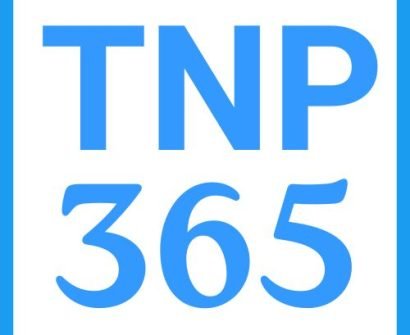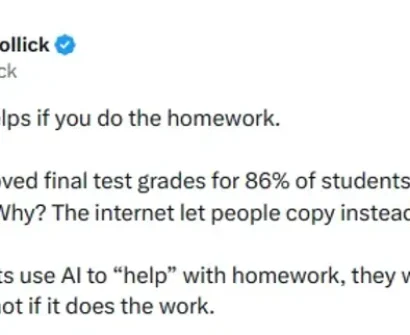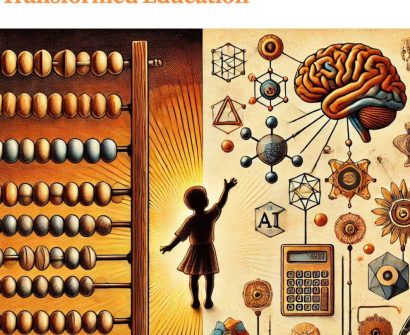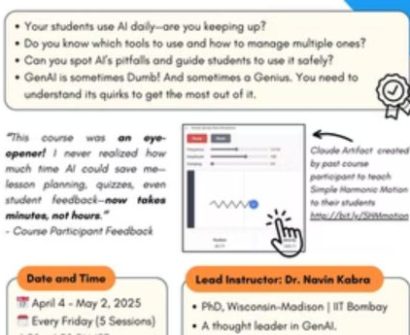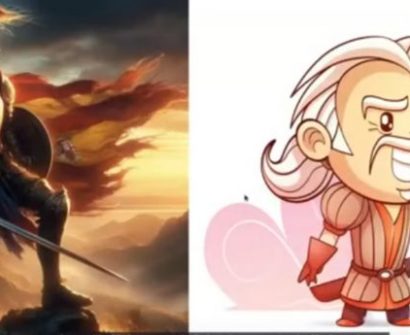Currently Empty: $0.00
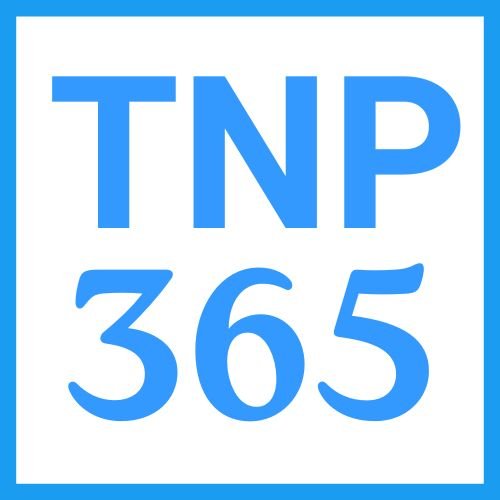
How India’s new year-round gifted program helps bright teens slow down, think harder, and rediscover the joy of puzzling things out.
Gifted learners often live with a quiet contradiction. In school, they’re far ahead of the curriculum, already fluent in the content others are still discovering. Yet, what they crave isn’t more of the same; it’s depth. They long for the chance to wonder, to be puzzled, to play with ideas that don’t resolve in a single step.
That’s what our new program TNP365 aims to create — a space where 13–15-year-olds can meet real challenge, not through harder sums or rarer facts, but through richer questions.
Each session started with something ordinary. Walking across a room. A simple work problem. A glass of water.
In Biology, Siddharth Bharath simply asked students to close their ears, walk and listen.
“I can hear the heels hit the ground first when I walk normally,” a student said. “But when I walk on my toes, I hear my toes hitting, though not as loudly.”
In most classrooms, that’s an interesting observation. Here, it was an opening to a lot of learning. “How does sound get from your foot to your ear?”, “What does it mean if there is more?”. This activity tied into research by Harvard Professor Daniel Lieberman on the mechanics of walking and running. From that single observation, the group began mapping how bones, tendons, and muscles distribute force. They talked about levers, mechanical advantage, and how modern running shoes have fundamentally changed the impact forces on our entire skeletal system.
This shift from “fast answers” to “deeper questions” was even clearer in the a math session. Mentor Saukhin Sarkar posed a problem that seemed simple: “Three workers build a wall in 6 days. How long would it take four workers?”
The quick answer came immediately: “4.5 days.”
But then, the push: “What if I told you it would actually take longer with four workers?”
Silence. Then confusion. Then, the best kind of thinking.
The students had assumed “more workers equals less time” without examining when that assumption holds. They hadn’t considered coordination costs, the nature of the task, or whether the work could even be divided. They’d treated the problem as arithmetic when it was really about logic. They learned that math helps us get to answers only if we know clearly what is the question that we are asking.
This is the shift TNP365 is designed for. Bright students spend years getting things quickly, plugging into formulas, and arriving at the “right” answer. They rarely encounter problems that require them to stop and think: Wait, does this assumption even make sense?
In the Chemistry, class mentor Hari Krishna began with just three principles:
- Everything is made of particles.
- Particles are always moving.
- Particles attract each other.
Then, the question: “Why is carbon dioxide a gas at room temperature while water is a liquid?”
The students knew the facts. They could recite boiling points. But could they explain why? Could they connect the observable fact (CO₂ is a gas) to the underlying mechanism (weaker intermolecular forces) using only those three principles?
That’s the shift: from knowing facts to understanding systems. From memorizing to reasoning. Within 90 minutes, students used those three principles to explain everyday experiences like why steam rises or how coffee smells spread through a room.
Across all subjects, the pattern was the same: Start with something ordinary. Ask a question that makes you think. Build toward insight that feels earned, not handed down.
Why This Matters
Gifted students often coast through school, finishing work in 12 minutes when others take 45. They get praised for being quick. They learn that “getting it fast” is what matters.
Then, usually around age 15 or 16, they hit something genuinely hard. And because they’ve never developed the muscle for sustained thinking, they assume they’ve hit their limit.
The problem isn’t intelligence. It’s that they’ve never been taught to think slowly, carefully, deeply. To sit with confusion. To build understanding from first principles.
That’s what this first week gave them: permission to be puzzled. Space to grapple with ideas that don’t resolve immediately. The experience of constructing knowledge rather than just consuming it.
What’s Next
Over the coming weeks, TNP365 will spiral deeper into these concepts. The biomechanics session will explore super-fast animal motions and medieval weapon mechanics. The chemistry discussions will apply those three principles to increasingly complex phenomena. The math problems will keep testing assumptions about what’s obvious. Physics will explore the concept of density, buoyancy and gravity, building a fundamental understanding of the forces governing our world.
Each week, one session per subject. Online and easily accessible. Enough to stretch thinking. Never too much to burn out.
If you know a student who would come alive in this kind of environment – or if you’re an educator who believes learning should feel this alive – share this piece with them. We are making the recordings of these first sessions freely available, so more young minds can experience what genuine curiosity-driven learning feels like.
Because the opposite of coaching culture isn’t less rigor. It’s deeper rigor. It’s the discipline of actually stopping to think.
Appendix – Summaries and Recordings of Week 1 classes
You can find the session summaries and recording links for all four subjects below.
Biology
Recording Link: https://zoom.us/rec/share/cnBuE_zuOZKjvCDQKgVKDyfLQlBgu6izEyPdpeWrBFTclpGqYvuALou3BTy-mG6s.u7HE8eO6-k3xQPX_
Summary: The session was an introduction to biomechanics, using a mix of theory and hands-on activities to explain how the human body creates movement. It covered how muscles, bones, and tendons work together as a mechanical system of forces, levers, and structures to perform actions like jumping and walking.
Chemistry
Recording Link: https://zoom.us/rec/share/2yfcbrue9CbkqOjkez_SLB9oYIBgWUlPpcdFPXOZxD4mJqOc-3ulzgpr6-x398U.H8nCjziQ_IGVco54
Summary: This session introduced the particulate nature of matter, explaining that all substances are made of constantly moving atoms and molecules with spaces and attractions between them. The main takeaway was to use these fundamental principles to explain everyday phenomena, such as diffusion and the different states of matter, rather than just memorizing facts.
Mathematics
Recording Link: https://zoom.us/rec/share/kieazU6i5nByWb2HqPSxG0xbWCYHdUqZ0eJZl0BchKkh39bWTP8XER3GR4PYutA.Fgtphq9rnexNnGdb
Summary: This introductory math session used an inquiry-based approach to explore the conceptual relationship between fractions and ratios. Through practical problems, the class emphasized the importance of mathematical exploration and critical thinking over simply finding a correct answer.
Physics
Recording Link: https://zoom.us/rec/share/dxB5_cLkfG3qKd_0Xepx_3nAVR1ccaRmcPWive8KdC86u3io7bqbpEtg9_b-ZdkF.88ksPlupCd4evR8_
Summary: This session introduced the fundamentals of mechanics, tracing the evolution of physics from Aristotle to Newton’s First Law. It covered key concepts like inertia, net force, and the relativity of motion, using real-world examples to explain why objects at rest stay at rest and objects in motion stay in motion.

